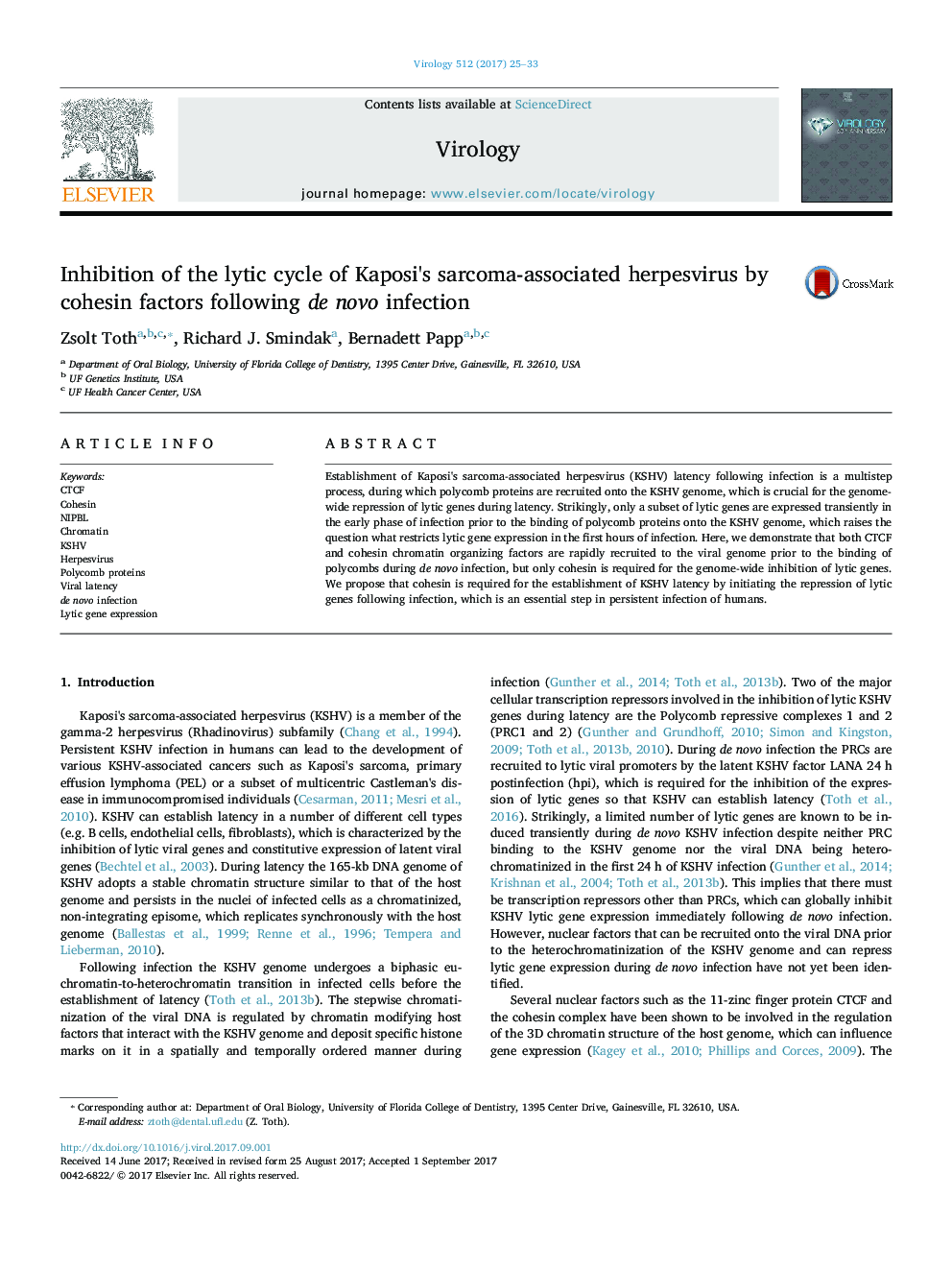| کد مقاله | کد نشریه | سال انتشار | مقاله انگلیسی | نسخه تمام متن |
|---|---|---|---|---|
| 5674861 | 1594205 | 2017 | 9 صفحه PDF | دانلود رایگان |
- CTCF and cohesin rapidly bind to the KSHV DNA during de novo infection.
- KSHV can replicate in cohesin-depleted cells following infection.
- Cohesin is required for the establishment of KSHV latency.
Establishment of Kaposi's sarcoma-associated herpesvirus (KSHV) latency following infection is a multistep process, during which polycomb proteins are recruited onto the KSHV genome, which is crucial for the genome-wide repression of lytic genes during latency. Strikingly, only a subset of lytic genes are expressed transiently in the early phase of infection prior to the binding of polycomb proteins onto the KSHV genome, which raises the question what restricts lytic gene expression in the first hours of infection. Here, we demonstrate that both CTCF and cohesin chromatin organizing factors are rapidly recruited to the viral genome prior to the binding of polycombs during de novo infection, but only cohesin is required for the genome-wide inhibition of lytic genes. We propose that cohesin is required for the establishment of KSHV latency by initiating the repression of lytic genes following infection, which is an essential step in persistent infection of humans.
Journal: Virology - Volume 512, December 2017, Pages 25-33
